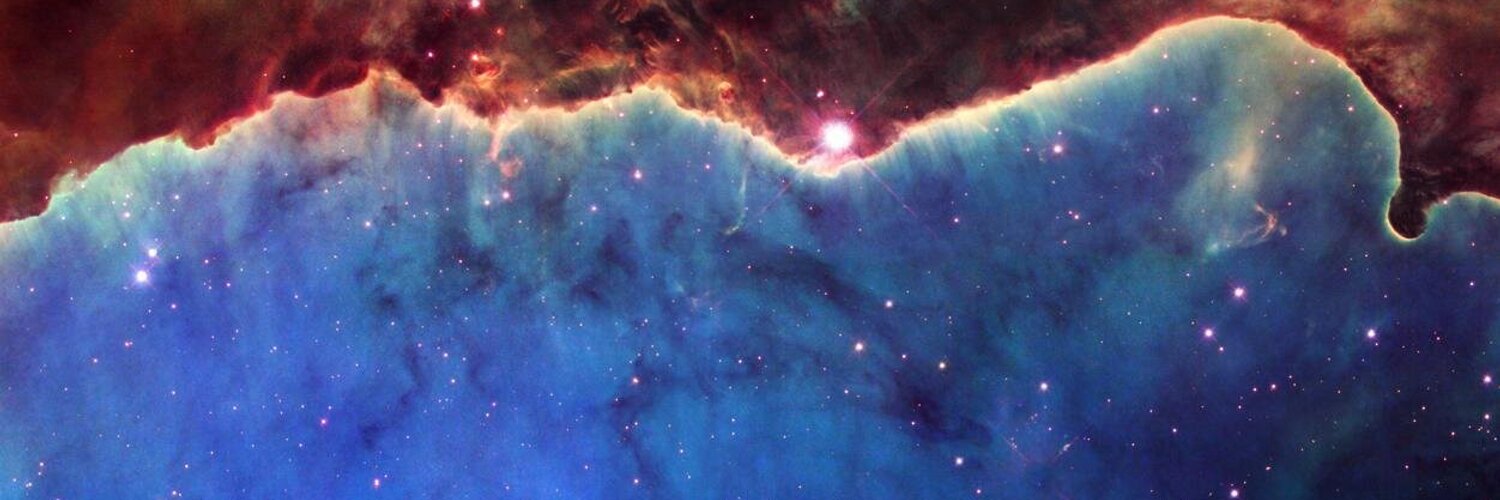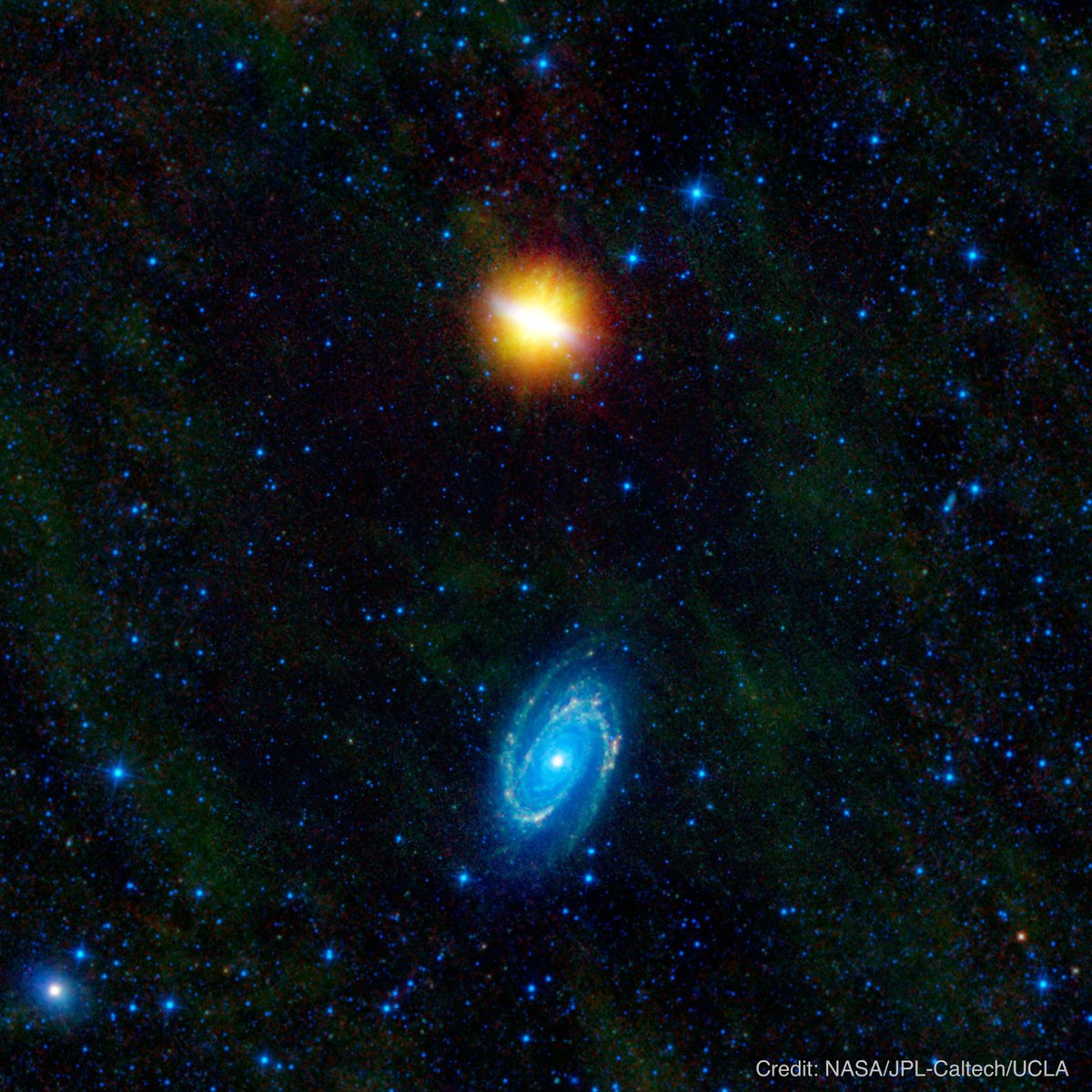
NASA Universe
@NASAUniverse
Your backstage pass to the universe and how NASA studies it. Verification: http://nasa.gov/socialmedia
Astronomers used the XRISM telescope — a partnership between @JAXA_en and @NASA with @ESA participation — to measure sulfur within our galaxy. They "X-rayed" clouds of gas and dust using bright sources behind them, finding sulfur in gas and solid forms: go.nasa.gov/3IG46fF
We heard it was #NationalCousinsDay, so we wanted to celebrate some cosmic cousins. Spiral, elliptical, and irregular galaxies each have their own quirks, yet they’re all made up of dust, gas and oodles of stars like their relatives! tmblr.co/Zz_UqjZowxKqSe…

Somewhere between small and supermassive black holes, an intermediate-mass black hole is hard to find because they don't shine unless they're caught in the act of eating a nearby star! Hubble and @ChandraXRay teamed up to study one of these rare events: go.nasa.gov/4maUFn0
Our first image of Betelgeuse's companion star revealed ⭐ This is NASA's discovery of a close-orbiting star to Betelgeuse, the 10th brightest star in our night sky. A @nasaames scientist confirmed the century-old hypothesis by using one of the largest ground-based telescopes…
A two-for-one special! ✨ In this 2016 image, the galaxy NGC 3274 glitters from 20 million light-years away. Located even farther, the galaxy PGC 213714 is also visible in the upper right: go.nasa.gov/3IEz0oQ
What you're seeing is a 98-light-year-wide chunk of star factory. This new image of N79, a giant region of star formation located about 160,000 light-years from Earth, combines observations from NASA's Chandra X-ray Observatory and @NASAWebb .✨
A carousel in space?! 🎠 The planets in the KOI-134 system orbit their star in an unusual way. See how the gravitational tug between two planets in very different orbits has created this surprising effect — and made these planets harder to spot initially: go.nasa.gov/45fO98S
📢 Important: As part of NASA’s effort to streamline communications, this account will eventually be archived. For news, discoveries, and resources related to understanding life and its potential in the cosmos – please follow @NASASolarSystem, @NASAMars and @NASAUniverse.
We can’t clean up your messy desktop, but we can provide a bit of beauty from the universe to act as a backdrop for it! We’ve created a batch of digital wallpapers featuring galaxies that are getting a little too close to each other. Grab yours here: go.nasa.gov/4nZfzY3

Our Sun is a main sequence star, which means that it converts hydrogen into helium in its core in a process that keeps it from collapsing. It has been doing this for over 4 billion years and will continue for another 4 billion or so. #MondayMotivation

Have you wondered … what is a star? In short, mostly a giant ball of hot gas. We're quite familiar with our star, the Sun, but there are many other types with different sizes, masses, ages, temperatures, and levels of brightness. Watch more: youtu.be/Hqo5GGHLARE
Digging up a galactic time capsule 🕰️ This #HubbleFriday view shows the globular cluster NGC 1786. Because of their stability and long lives, star clusters like these act as cosmic fossils, preserving stars from the early stages of a galaxy’s formation: go.nasa.gov/3TJzDzN
Want to know what Hubble's up to? You can always check what the telescope is currently investigating (or explore its upcoming and past targets!) on our website: go.nasa.gov/4eTHeFz
Roman’s ready to soak up the Sun! ☀️ #ICYMI: The solar panels have been installed on our Nancy Grace Roman Space Telescope. Roman is on schedule for launch by May 2027, with the team aiming for as early as fall 2026. 🔗 go.nasa.gov/44DVS0l
Get ready for a new NASA @SpaceApps Challenge on October 4-5! Check out the post for more details, and register here: bit.ly/44n6QXY
Registration is open for the 2025 NASA #SpaceApps Challenge! 🌍🚀💫 Join the largest annual global hackathon, choose from 450+ Local Events, and use open data from #NASA & 14 Space Agency Partners. Register today: bit.ly/3TwZnzl
#TBT to July 13, 2018, when HaloSat deployed from the @Space_Station! This toaster-sized satellite helped find that the hot gas surrounding our galaxy, called its halo, is disk-shaped and clumpier than expected. Learn more: go.nasa.gov/44OZWth
Hot DOGs in the early universe? Our retired WISE satellite spied hot dust-obscured galaxies (DOGs) located about 10 billion light-years away. While they are superbright, most of their light is absorbed by thick shrouds of dust. go.nasa.gov/457eENB

Ready to launch your NASA internship journey? Join our live webinar Friday, Aug. 1, 1–2 p.m. ET to explore opportunities, learn how to apply, and get insider tips. Open to high school, undergrad & grad students! Register: go.nasa.gov/4lPYNbK